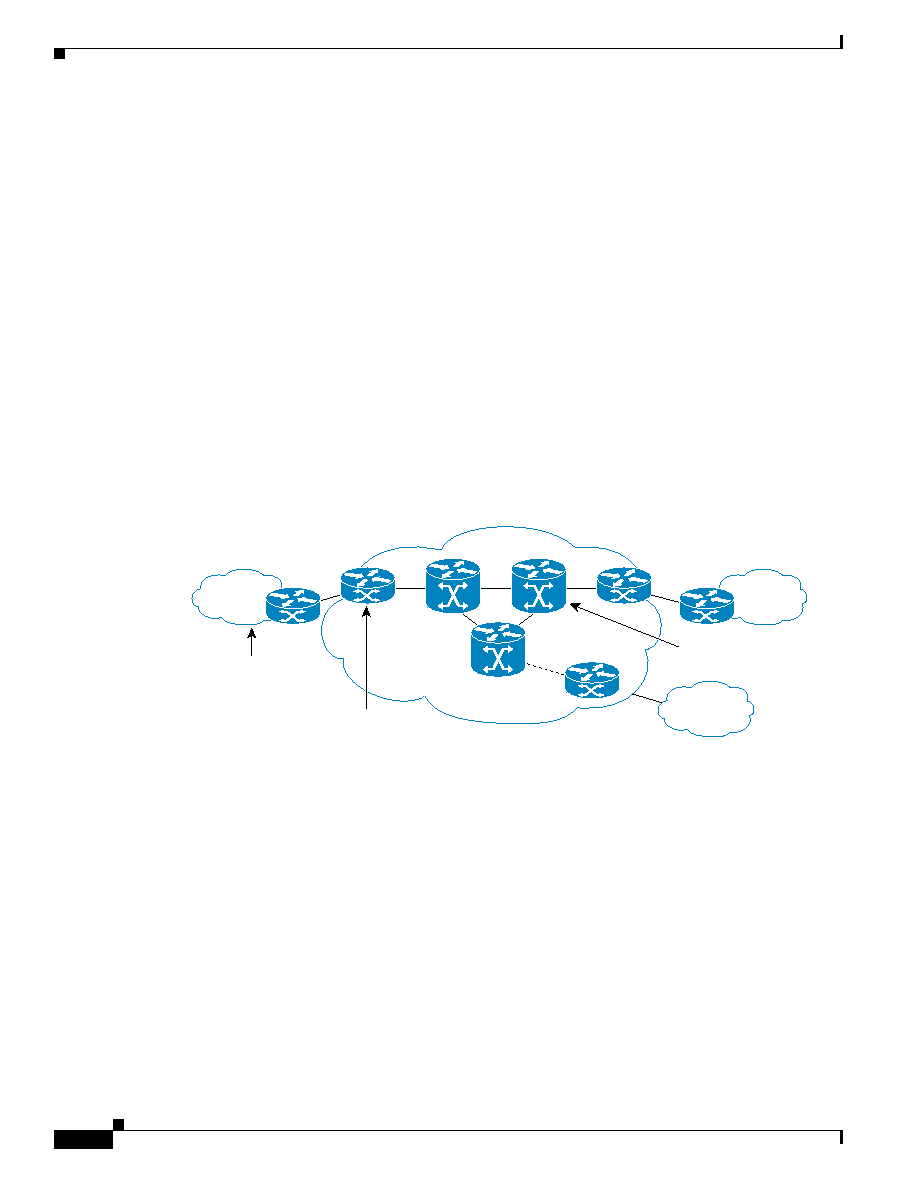
VPNs are composed of three basic entities:
connectivity to the SP MPLS network by connecting to the provider edge router. The CE router is
not aware of any MPLS functionality and is not required to use any special IOS feature set.
VPNs. The ingress interface on the PE router is configured to define the specific VPN to which the
customer is connected. The PE router is responsible for assigning a label to each VPN and
redistributing the routes between the customer and BGP within the provider backbone.
devices, such as ATM switches that are not enabled to support MPLS. The P routers are simply
provider backbone devices configured to support MPLS. There is no definition of VPNs on these
devices. They serve merely to support an additional layer of hierarchy to the MPLS network.
There are two label allocation and switching methods:
uses a 32-bit label field that is inserted between the Layer 2 and Layer 3 headers.
ATM uses the ATM header as the label. Any other labels (such as the VPN label applied by BGP to
a packet before the packet is sent to the egress interface) assigned to the packet prior to the
segmentation and reassembly (SAR) are included in the first cell payload and are available for
packet forwarding once the cells have been reassembled.
interface is a cell interface, this label is applied in the VPI/VCI field. If the egress interface is a frame
interface, an additional 32-bit label is assigned and a label-stack is created.